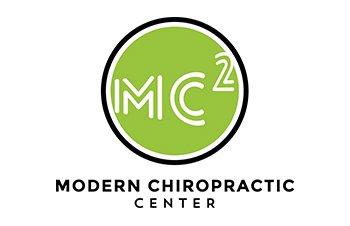Why Are X-rays so Important for People with Spinal Pain
When taken properly and interpreted scientifically, X-rays can be of vital importance to chiropractors who focus on correcting underlying spinal misalignment. Medical Doctors primarily prescribe drugs and perform surgery. Those are their primary treatment tools. Therefore many “medical” guidelines do not recommend routine imaging for patients with low back pain. However, Chiropractors do not merely prescribe drugs that hide symptom. Chiropractors adjust the spine. We are applying forces into the spine with the purpose of creating motion and/or realigning the spine. Because chiropractors are adjusting the spine “seeing” what the spine looks like first is important. Many chiropractors want to know if there is underlying pathology of the spine and joints before applying a force into it.
X-rays Can Discover Underlying Pathology
A recent study1 co-authored by the owner of Modern Chiropractic Center, Dr. Joe Betz, compiled scientific articles that researched the prevalence of Xray findings that are important for the practicing Doctor of Chiropractic to know about prior to adjusting the spine. The table below summarizes these findings. Up to 44% of patients have serious pathology in one study and another showed 47% having contraindications to spinal adjustment.

These findings may not alter the course of treatment for a medical doctor prescribing pain relievers and muscle relaxers, but they absolutely can alter the type of spinal adjustment or other conservative treatment provided by Chiropractors.
X-rays Show Abnormal Spinal Alignment that can be the Cause of Someone’s Pain
Abnormal spinal alignment, including loss of the normal cervical curve, rounding of the back (hyperkyphosis), scoliosis, and alteration of the curve in the low back have all been shown to impact a person’s health, most notably pain.
Figure: Examples of Abnormal Spine Alignment Conditions
In brief, for spine radiographic assessment and outcomes, there exists the highest quality evidence (RCTs) for methods shown to decrease forward head posture,2-10 increase cervical lordosis, 1,2,5-12 decrease thoracic hyperkyphosis,13-21 increase lumbar lordosis,22-25 and decrease/stabilize scoliosis deformities.26-30
So, there are clinically meaningful, conservative approaches that can improve abnormal spine alignment. Many of these RCT’s have shown superior, longer lasting results as compared to standard treatment. So, the question should really be, why wouldn’t ALL doctors take X-Rays for patients with spinal pain?
REFERENCES:
- Oakley PA, Betz JW, Harrison DE, Siskin LA, Hirsh DW; International Chiropractors Association Rapid Response Research Review Subcommittee. Radiophobia Overreaction: College of Chiropractors of British Columbia Revoke Full X-Ray Rights Based on Flawed Study and Radiation Fear-Mongering. Dose Response. 2021;19(3):15593258211033142. Published 2021 Aug 16. doi:10.1177/15593258211033142
- Moustafa IM, Diab A, Shousha T, Harrison DE. Does restoration of sagittal cervical alignment improve cervicogenic headache pain and disability: A 2-year pilot randomized controlled trial. Heliyon. 2021;7(3):e06467.
- Moustafa I, Youssef ASA, Ahbouch A, Harrison DE. Demonstration of autonomic nervous function and cervical sensorimotor control after cervical lordosis rehabilitation: A randomized controlled trial. J Athletic Training. 2021;56(3):10
- Moustafa IM, Diab AA, Hegazy F, Harrison DE. Does improvement towards a normal cervical sagittal configuration aid in the management of cervical myofascial pain syndrome: a 1- year randomized controlled trial. BMC Muscoskel Disord. 2018; 19(1):396.
- Moustafa IM, Diab AA, Harrison DE. The effect of normalizing the sagittal cervical configuration on dizziness, neck pain, and cervicocephalic kinesthetic sensibility: a 1-year randomized controlled study. Eur J Phys Rehabil Med. 2017;53(1):57-71.
- Moustafa IM, Diab AAM, Hegazy FA, Harrison DE. Does rehabilitation of cervical lordosis influence sagittal cervical spine flexion extension kinematics in cervical spondylotic radiculopathy subjects?. J Back Musculoskelet Rehabil. 2017; 30(4):937-941.
- Moustafa IM, Diab AAM, Taha S, Harrison DE. Demonstration of central conduction time and neuroplastic changes after cervical lordosis rehabilitation in asymptomatic subjects: a randomized, placebo-controlled trial In: Proceedings of the 14th Biennial Congress of the World Federation of Chiropractic; March 15-18, 2017.
- Moustafa IM, Diab AA, Taha S, Harrison DE. Addition of a Sagittal Cervical Posture Corrective Orthotic Device to a Multimodal Rehabilitation Program Improves Short- and LongTerm Outcomes in Patients With Discogenic Cervical Radiculopathy. Arch Phys Med Rehabil 2016;97(12):2034-2044.
- Moustafa IM, Diab AA, Harrison DE. Does Improvement towards a Normal Cervical Sagittal Configuration Aid in the Management of Lumbosacral Radiculopathy: A Randomized Controlled Trial in: Proceedings of the 13th World Federation of Chiropractic Biennial Congress/ECU Convention; 2015; Athens, Greece: Paper #184. [Mediterranean Region Award Winning Paper].
- Moustafa IM. Does improvement towards a normal cervical configuration aid in the management of fibromyalgia. A randomized controlled trial. Bull Fac Ph Th Cairo Univ. 2013; 18(2):29-41.
- Moustafa IM, Diab AM, Ahmed A, Harrison DE. The efficacy of cervical lordosis rehabilitation for nerve root function, pain, and segmental motion in cervical spondylotic radiculopathy. PhysioTherapy. 2011;97(supplement):846-847.
- Lee CH, Heo SJ, Park SH, Jeong HS, Kim SY. The functional and morphological changes of the cervical intervertebral disc after applying lordotic curve controlled traction: a double-blind randomized controlled study. Int J Environ Res Publ Health. 2019;16(12):2162.
- Gladin A, Katzman WB, Fukuoka Y, Parimi N, Wong S, Lane NE. Secondary analysis of change in physical function after exercise intervention in older adults with hyperkyphosis and low physical function. BMC Geriatr. 2021;21(1):133.
- Moustafa IM, Walton LM, Raigangir V, Shousha TM, Harrison D. Reduction of posture hyperkyphosis improves short- and long-term outcomes in patients with neck pain. Abstract In. J Orthop Sports Phys Ther. 2020;50(1):CSM143.
- Katzman WB, Parimi N, Gladin A, Wong S, Lane NE. LongTerm Efficacy of Treatment Effects After a Kyphosis Exercise and Posture Training Intervention in Older Community Dwelling Adults: A Cohort Study. J Geriatr Phys Ther. 2020;44:127-138. doi:10.1519/JPT.0000000000000262.
- Watson SL, Weeks BK, Weis LJ, Harding AT, Horan SA, Beck BR. High-intensity exercise did not cause vertebral fractures and improves thoracic kyphosis in postmenopausal women with low to very low bone mass: the LIFTMOR trial. Osteoporos Int. 2019;30(5):957-964.
- Jang H-J, Hughes LC, Oh D-W, Kim S-Y. Effects of corrective exercise for thoracic hyperkyphosis on posture, balance, and well-being in older women: a double-blind, group-matched design. J Geriatr Phys Ther. 2019;42(3):E17-E27.
- Bezalel T, Carmeli E, Levi D, Kalichman L. The effect of schroth therapy on thoracic kyphotic curve and quality of life in scheuermann’s patients: a randomized controlled trial. Asian Spine J. 2019;13(3):490-499.
- Katzman WB, Vittinghoff E, Lin F, et al. Targeted spine strengthening exercise and posture training program to reduce hyperkyphosis in older adults: results from the study of hyperkyphosis, exercise, and function (SHEAF) randomized controlled trial. Osteoporos Int. 2017;28(10):2831-2841.
- Kamali F, Shirazi SA, Ebrahimi S, Mirshamsi M, Ghanbari A. Comparison of manual therapy and exercise therapy for postural hyperkyphosis: a randomized clinical trial. Physiother Theory Pract. 2016;32:92-97.
- Seidi F, Rajabi R, Ebrahimi I, Alizadeh MH, Minoonejad H. The efficiency of corrective exercise interventions on thoracic hyperkyphosis angle. J Back Musculoskelet Rehabil. 2014;27(1): 7-16.
- Oakley PA, Ehsani NN, Moustafa IM, Harrison DE. Restoring lumbar lordosis: a systematic review of controlled trials utilizing chiropractic biophysics (CBP) non-surgical approach to increasing lumbar lordosis in the treatment of low back disorders. J Phys Ther Sci. 2020;32(9):601-610.
- Diab AAM, Moustafa IM. The efficacy of lumbar extension traction for sagittal alignment in mechanical low back pain: a randomized trial. J Back Musculoskelet Rehabil. 2013;26(2): 213-220.
- Moustafa IM, Diab AA. Extension traction treatment for patients with discogenic lumbosacral radiculopathy: a randomized controlled trial. Clin Rehabil. 2012;27(1):51-62.
- Diab AA, Moustafa IM. Lumbar Lordosis Rehabilitation for Pain and Lumbar Segmental Motion in Chronic Mechanical Low Back Pain: A Randomized Trial. J Manipulative Physiol Therapeut. 2012;35(4):246-253.
- Schreiber S, Parent EC, Hill DL, Hedden DM, Moreau MJ, Southon SC. Schroth physiotherapeutic scoliosis-specific exercises for adolescent idiopathic scoliosis: how many patients require treatment to prevent one deterioration? – results from a randomized controlled trial – “SOSORT 2017 Award Winner”. Scoliosis and Spinal Disord. 2017;12:26.
- Kuru T, Yeldan ˙I, Dereli EE, Ozdinçler AR, Dikici F, Çolak ¨ ˙I. The efficacy of three-dimensional Schroth exercises in adolescent idiopathic scoliosis: a randomised controlled clinical trial. Clin Rehabil. 2016;30(2):181-190.
- Schreiber S, Parent EC, Moez EK, et al. The effect of Schroth exercises added to the standard of care on the quality of life and muscle endurance in adolescents with idiopathic scoliosis-an assessor and statistician blinded randomized controlled trial: “SOSORT 2015 Award Winner”. Scoliosis. 2015;10:24.
- Noh DK, You J-H, Koh J-H, et al. Effects of novel corrective spinal technique on adolescent idiopathic scoliosis as assessed by radiographic imaging. J Back Musculoskelet Rehabil. 2014; 27(3):331-338.
- Ambrosini E, Cazzaniga D, Rocca B, Ferrante S. Active self correction and task-oriented exercises reduce spinal deformity and improve quality of life in subjects with mild adolescent idiopathic scoliosis. Results of a randomised controlled trial. Eur Spine J 2014;23(6):1204-1214.
For more help with spinal pain treatment or for an Xray call our experienced team at Modern Chiropractic Center in Boise or Nampa or fill out our online form.






